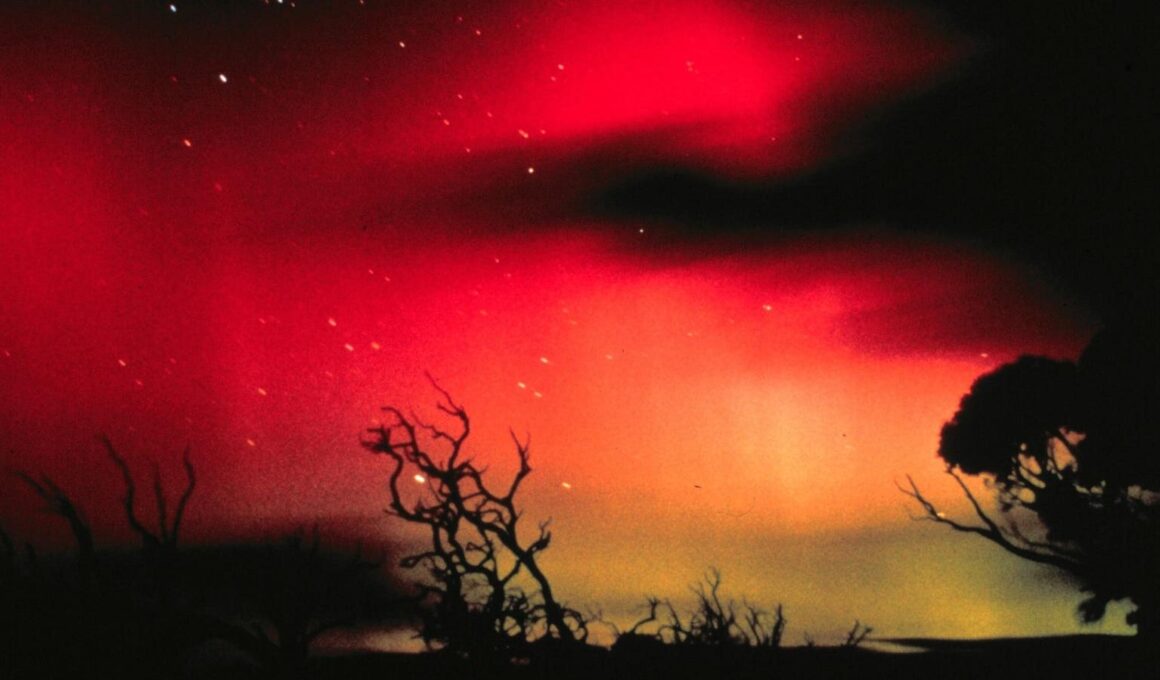Topline
Several continental U.S. states may get another chance to see the Northern Lights again Tuesday night after a group of solar ejections were released toward the Earth over the weekend, though Tuesday’s aurora will likely be weaker than previous ones.
The aurora borealis
Key Facts
Tuesday night’s aurora borealis has a Kp index of four, meaning the lights will move further from the poles, and become “brighter and there will be more auroral activity,” according to the National Oceanic and Atmospheric Administration.
A group of coronal mass ejections—eruptions of solar material—arrived to Earth over the weekend, and NOAA predicts CMEs will continue passing by until Tuesday, causing the aurora borealis to be visible in several continental U.S. states.
This comes after an unexpectedly strong G4 geomagnetic storm was observed Monday with a Kp index that reached high level eight status, and some of the strongest Northern Lights since May’s impressive show—alongside the Perseid meteor shower peak.
However, there still may be a chance to see the Northern Lights alongside the Perseids Tuesday night: Although the meteor shower’s peak has already passed, the few days right before and after the peak are also prime viewing days.
Solar activity has been unusually busy in recent months as the sun’s 11-year solar cycle approaches its anticipated peak between late 2024 and early 2026, with sunspots expected to intensify over the next year, and likely triggering more geomagnetic storms.
Where Will The Northern Lights Be Visible Tonight?
Although it’s hard to know where the Northern Lights will show up, they may be the most visible Tuesday night in Canada and Alaska, according to NOAA (see image below). However, continental U.S. states within the aurora’s view line include Washington, Oregon, Idaho, Montana, North Dakota, South Dakota, Nebraska, Minnesota, Wisconsin, Michigan, Maine and the northernmost part of New York.
Tuesday night’s aurora view line.
What’s The Best Way To See The Northern Lights?
The lights are typically the most active between 10 p.m. and 2 a.m. For the best views of the Northern Lights, NOAA advises traveling as close to the poles as possible, avoiding city lights and other light pollution, monitoring weather forecasts for prime viewing conditions and finding a position on a vantage point like a hilltop.
What’s The Best Way To Photograph The Northern Lights?
Smartphone cameras are sensitive enough to pick up the aurora, even when it’s invisible to the naked eye. Visit Iceland, a tourist website for Iceland, where the lights are often visible, advises turning on night mode to best increase smartphone camera exposure.
Key Background
Solar Cycle 25—the cycle the sun goes through around every 11 years—has been the cause of geomagnetic storms that have resulted in recent sightings of the Northern Lights, and NASA predicts it will continue on into next year. Cycle 25 began in Dec. 2019, and it’s estimated it will reach its maximum—when activity is expected to peak— between late 2024 and early 2026. It’s projected to peak with 115 sunspots, which are where geomagnetic storms originate. Although the maximum hasn’t happened yet, the sun’s activity has been busier than scientists anticipated, so it’s possible there will be even more geomagnetic storms leading up to 2025, though it’s difficult to predict exactly when these storms will occur.
Big Number
299. That’s about how many sunspots were reached on August 8, according to NOAA’s predictions. This is the highest sunspot number since Solar Cycle 25 began, and the highest number since at least July 2002. However, the official number will be reported by September 1.








